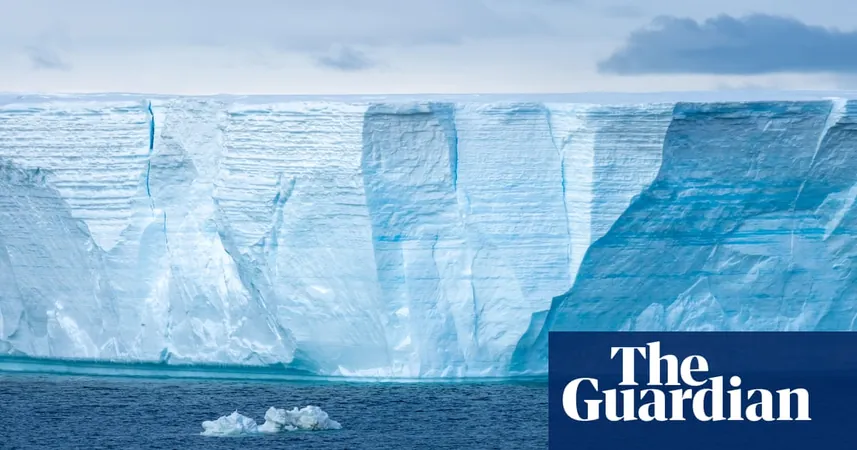
US Halts Critical Sea Ice Data Sharing: A Dire Warning for Our Planet!
2025-07-01
Author: Ming
A Threatening Silence on Sea Ice Data
Scientists tracking record low Antarctic sea ice levels are sounding the alarm! With the US Department of Defense deciding to cease processing vital satellite data by the end of this month, researchers worry that monitoring the alarming changes at both poles will become increasingly difficult.
Why Sea Ice Matters More Than Ever
Understanding sea ice is crucial to unraveling the impacts of global heating. This frozen layer reflects sunlight back into space, and its disappearance means more ocean is exposed, leading to accelerated warming. The National Snow and Ice Data Center (NSIDC), a key player in monitoring sea ice globally, relies on this data to keep tabs on our planet's climate health.
The Data Shutdown: What It Means for Climate Research
In a shocking announcement, scientists learned that the Department of Defense will stop sharing sea ice data as of July 31. This decision aligns with alarming trends observed during the Trump administration, where climate monitoring initiatives faced significant budget cuts. The data cessation comes at a precarious time, as research shows record low sea ice levels have accelerated the breakup of icebergs from Antarctica, potentially leading to faster-than-expected rises in global sea levels.
A Critical Warning System Under Threat
Dr. Alex Fraser from the Australian Antarctic Program Partnership describes NSIDC’s sea ice data as "our number one heart rate monitor". He warns that this loss will force scientists to rely on alternative instruments, which may not provide the same level of context for ongoing studies.
Competing Technologies: The Challenge Ahead
While NSIDC is exploring different satellite technologies, experts like Dr. Walt Meier acknowledge the challenges of collecting consistent long-term records. The transition to new instruments could lead to increased uncertainty in climate trend predictions, complicating our understanding of sea level rise.
The Broader Impacts of Vanishing Sea Ice
The research points to an alarming connection between shrinking sea ice and a rise in iceberg calving from ice shelves. While the reduction in sea ice doesn’t directly affect sea levels, it makes ice shelves more vulnerable to wave action, prolonging their disintegration.
Wildlife at Risk: A Looming Catastrophe
Moreover, the study highlights the detrimental knock-on effects on wildlife. Species like seals and penguins are at grave risk, with a notable incident in late 2022 where thousands of emperor penguin chicks perished following the premature break-up of their ice shelter.
A Call to Action: Safeguard Our Planet's Future
This situation underscores an urgent need for the scientific community to adapt quickly. Without reliable sea ice data, projections about the impact of climate change on sea level and wildlife will be increasingly inaccurate, endangering not just polar ecosystems, but global communities as well. The call to action is clear: we must ensure that vital climate data remains accessible to safeguard the future of our planet.
 Brasil (PT)
Brasil (PT)
 Canada (EN)
Canada (EN)
 Chile (ES)
Chile (ES)
 Česko (CS)
Česko (CS)
 대한민국 (KO)
대한민국 (KO)
 España (ES)
España (ES)
 France (FR)
France (FR)
 Hong Kong (EN)
Hong Kong (EN)
 Italia (IT)
Italia (IT)
 日本 (JA)
日本 (JA)
 Magyarország (HU)
Magyarország (HU)
 Norge (NO)
Norge (NO)
 Polska (PL)
Polska (PL)
 Schweiz (DE)
Schweiz (DE)
 Singapore (EN)
Singapore (EN)
 Sverige (SV)
Sverige (SV)
 Suomi (FI)
Suomi (FI)
 Türkiye (TR)
Türkiye (TR)
 الإمارات العربية المتحدة (AR)
الإمارات العربية المتحدة (AR)